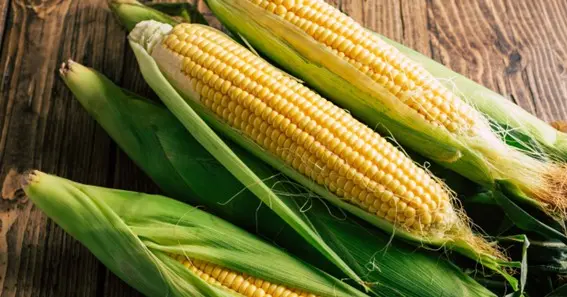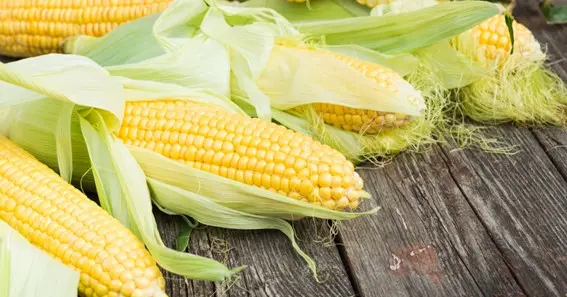What is maize? Maize, also known as corn, is a tall, cereal grass that produces kernels used for food, feed, and various industrial applications. Corn is an important crop with many historical and practical uses. Wild teosinte from southern Mexico grew 9,000 years ago. North Americans name this tall, dense grass “corn.” It is vital to many civilizations and farming systems worldwide. It is essential to diets and enterprises worldwide due to its versatility. In this article we discuss about what is maize and more about it.
What Is Maize?
Maize, also known as corn, is a tall, cereal grass that produces kernels used for food, feed, and various industrial applications. North American maize is a tall, dense grass that yields food grains. Southern Mexican natives tamed it 9,000 years ago from wild teosinte. Native Americans invented multi-cropping. They dubbed it “the Three Sisters,” sowing maize, beans and squash. The maize plant’s green stem has pollen-producing tassels and ears. People call these ears’ grains “kernels” or seeds. Most commercial maize has yellow or white kernels, but others have red, blue, or purple.
Also Read : What Is A Kilowatt Hour? Important Information Regarding The Kilowatt Hour
Things You Ought To Understand About Corn

Maize, an important crop worldwide, has a fascinating history. You must study its appearance, growth, and impacts to grasp its role in agriculture and society. If you already read what is maize, you must know these maize facts demonstrate its value.
Historical Importance
Native American farmers have grown maize for millennia. Domesticating this animal improved farming, which grew civilizations. Ancient Mayans, Aztecs, and Incas relied on maize for nourishment. The crop affected religion, society, and the environment, and the discovery of maize farming helped these civilizations grow, leading to cities and cultural progress.
Plant Characteristics
As we already discuss what is maize, you must know different maize varieties are tall, some growing 12 feet tall. They have thick leaves and a woody stalk. Pollen comes from the plant’s top male inflorescences, or tassels. The wind carries pollen to lower stalk female inflorescences or ears. Corn ear husks cover rows of kernels. Variety and growth factors affect rows and kernels.
Planting And Caring
Soils with good drainage, water, and sunlight are excellent for maize. Commonly planted in rows, it needs great care to thrive and produce the most. Farmers must monitor soil fertility, water availability, and pest control to maintain healthy crops. Precision farming and genetic manipulation have increased corn yields. Hybrids that mature faster help harvests in shorter-season areas.
Healthiness
Maize’s high carbohydrate content makes it an energy source. Additionally, it contains high quantities of magnesium, folate, and vitamin B6, making it essential to a healthy diet. Fiber-rich whole maize kernels are excellent for your intestines. Several maize varieties contain antioxidants like carotenoids that are excellent for your eyes and may lessen your risk of several diseases. Cornmeal and corn syrup are also staples of food manufacturing.
Maize Varieties
If you read properly what is maize, you should know maize varieties include dent, flint, sweet, and popcorn. Each variety has different functions for feeding animals, eating, and creating things. The depression on dent maize kernels makes it ideal for animal feed and ethanol production. Flint corn has hard, vitreous seeds used in grits and hominy. Soft-kernel sweet corn is popular in many foods. Since popcorn is flint corn, it puffs up and grows when cooked.
Cultural Importance

Many indigenous civilizations depend on maize for food and livelihood. It influences mythology, traditions, and meals. In Mesoamerica, maize was considered a gift from the gods, and producing and consuming it were holy activities. Event and festival attendees enjoy growing, harvesting, and consuming maize. Tortillas, tamales, and arepas demonstrate corn’s versatility and cultural significance worldwide.
Economic Impact
Maize powers enterprises worldwide. It is used in food, biofuels, animal feed, and other industries. Because corn is so crucial, Americans plant millions of acres of it. The Midwest’s maize belt is known for its corn production, which boosts the economy. Global maize trade affects food security, market pricing, and agricultural strategy. Due to its versatility in food and energy production, maize will remain in high demand.
Gene Types
Because of its genetic diversity, maize can flourish in many climates and battle pests and diseases. Variety is crucial for food security and sustainable farming. Breeding projects aim to generate maize that can endure drought, extreme temperatures, and salty soil. Genetic engineering may have made maize healthier and pest-resistant. Protecting wild cousins and traditional landraces preserves the genetic pool for future breeding.
Maize Fate
Continuous research and development change maize. Researching genetics and sustainable farming methods can help farmers grow more crops, make them healthier, and reduce environmental impact. New technologies like precision agriculture employ data and technology to grow maize more efficiently. Other efforts are underway to generate climate-resilient maize cultivars. Studying maize’s potential in bioplastics and biofortified foods demonstrates its importance in future food systems.
Also Read : What Is An Everything Shower? Important Information Regarding An Everything Shower
Conclusion
Maize is more than a crop. It’s a symbol, an economic driver, and a daily staple worldwide. Originally grown in ancient Mexico and now used in modern agriculture, maize has a rich history and a bright future. Its versatility and nutrition make it vital to food and economic security. New corn-growing methods and improvements will ensure that this vital crop survives. Continued research and environmentally friendly ways will help maize solve future difficulties, making it increasingly vital in global food and farming systems. In above we discuss about what is maize and explore more about it.
FAQ
How Is Maize Mostly Used?
Maize feeds animals, generates energy, and supplies industry. This crop has several uses.
How Does Maize Ensure Food Security?
Maize provides energy and nutrients, helping global nutrition and food security.
What Is Three Sister’s Polyculture?
Growing maize, beans, and squash in the Three Sisters polyculture improves soil health, biodiversity, and the future of agriculture.
What Maize Varieties Exist?
Maize includes dent, flint, sweet, and popcorn. Each offers unique benefits.
How Does Maize Migrate?
Maize is durable and long-lasting because its genetic diversity enables it to grow well in different climates, combat pests, and adapt to changing natural conditions.
Sources:
https://en.wikipedia.org/wiki/Maize
https://www.croptrust.org/pgrfa-hub/crops-countries-and-genebanks/crops/maize
Explore some exciting articles what-is-a-kilowatt-hour










